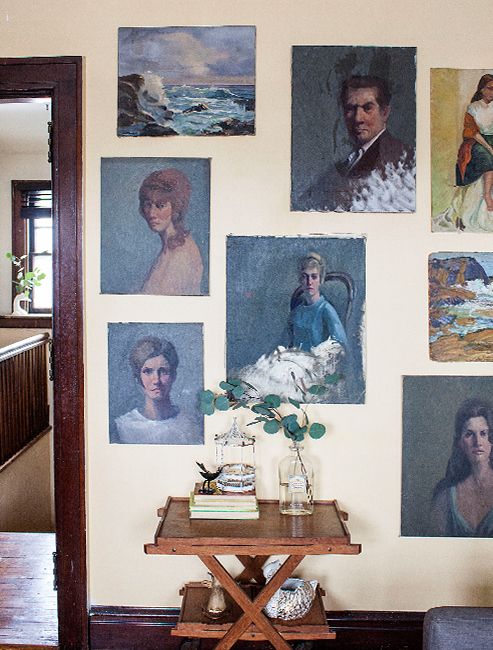
Your home is one of your biggest investments. When the time comes to sell it, putting time and effort into hiring the best real estate agent for you goes a long way to making sure you have a good transaction. According to the National Association of Realtors, 92% of Massachusetts home sellers worked with a real estate agent. But only 59% were “very satisfied” with the selling process. 33% of home sellers not being happy is a good chunk of the selling demographic. Why so many?
Three reasons people might be dissatisfied with their broker spring to mind. One: the realtor they hired might not have been a good fit for them–they might not have felt their needs were being listened too OR they might not have had enough confidence in their broker so they didn’t heed selling advice they were given. Two: they might have had or have been given unrealistic expectations for what their house was worth. Three: the house might not have been properly prepped to get great listing photos and successful showings.
All of those reasons emphasize how important it is to put your time and effort into hiring the best real estate agent for your home and for you. The right agent is not always the person with the most sales, the most signs around town or the highest suggested listing price in their market analysis.
As move managers, we work with our clients and their realtors to make sure their house is prepared for sale. It’s the realtor’s job to sell the house. It’s our job to work with our clients to get it staged and ready so the realtor can do their best work. Having spent eight years working with both parties, we’ve gotten some pretty good insights into what can make a real estate agent/home seller relationship work. Here are some questions you may want to ask as part of the interview and hiring process. There are no right or wrong answers but they do give you information about the agent and their selling process to consider.
How long have you been selling real estate and what did you do before this career? Are you full-time or part-time?
This gives you some insight into whether they are a dedicated professional and what kind of life experience they bring to the profession.
What are your first impressions of our house?
Sometimes houses are straight forward, like a colonial or a ranch, and can be appreciated by everyone. Houses with a little more personality or quirkiness don’t appeal to everyone. They have a smaller pool of buyers, but those buyers are all looking for a house that is a little different. Your real estate agent should see your house as it is, and not try and market it as something else. If you have a contemporary, for example, and your realtor can’t appreciate it, find someone who can.
Are there any improvements you would suggest and will the cost of those improvements be seen in the sale price?
Never make improvements to your house until you have hired your real estate agent. They have their finger on the market. They know if your home is best sold “as is,” whether paint and freshly finished hardwoods will make a difference or whether significant work should be done like new countertops, lighting, bathroom upgrades, etc. If you ask three realtors, you might get three different answers. Which one makes the most sense to you?
And beware the realtor who does not make any suggestions until after you have listed with them.
What is your plan for marketing our house? Can you show me some of your most recent listings? Do you have your own website?
Read the home descriptions. Look at the listing photos. Are they appealing or do they look like they were shot with a Kodak Instamatic on an overcast day? Are they clear or are they cluttered? 93% of Massachusetts homebuyers say the online listing was important in their home search. A realtor who does not take advantage of that huge market by providing the best possible photos and listing is not doing their best work.
Is their website professional? Does it make it easy for potential buyers to contact the agent?
And what other websites will the house be listed on?
Can you give me the names and contact information for two people who worked with you this year who have similar properties?
You want to hear first hand how it was to work with this particular agent. Did the seller feel rushed? Did they feel like they were informed throughout the process? Did the agent act on their behalf in all interactions with the buyer’s representative? How long did the house take to sell? What would they have done differently.
When is the best time for our house to be listed?
This is a trick question. The best time to list a house is when YOU are ready and when the house is ready. Of course a spring market is important, but in a good economy, a well prepared and well priced home can sell any time of year. If an agent pressures you intently about must list dates, it may be a sign they are more interested in selling in volume than in respecting the seller’s needs. A real estate agent will make a suggestion, but they will also understand if it’s going to be hard for you to get the house ready in time. They will also steer you away from doldrums periods like the week of the Fourth of July and Thanksgiving week.
Ask business questions:
- How much will it cost to sell my home?
- What is your commission and is it negotiable?
- How long is the listing period?
- How will the selling process work?
- How often and how will you communicate with me?
After the initial visit, the realtor will visit again with their market analysis, including comparable listings and a suggested listing price. Review those, ask any more questions you might have, and sleep on it overnight before you make a final decision.
We suggest interviewing at least three real estate agents. Ask friends for first hand referrals. A first-hand referral is not to someone’s daughter or a friend of a friend. It’s to someone who represented them in a successful selling or buying transaction. Short of that, check in somewhere that people talk to people, like at a senior center. Don’t rely on who has the most signs or newspaper ads, that isn’t always indicative of how good they are to work with.
If this seems overwhelming, relax and breathe. Once you start, it’s easier than you think. And if you feel like you would like some extra support, ask your move manager to sit in on the visits and offer you an unbiased opinion. You are hiring a professional to represent you in what might be one of the largest business transactions in your life. Investing the time in getting to know that person so you are confident they are giving you good advice and professional selling services is worth the effort in the long run.







 When you’re getting ready to make a transition, you might wonder how long before your move should you start working with a move manager? That depends: are you a sprinter or a marathoner?
When you’re getting ready to make a transition, you might wonder how long before your move should you start working with a move manager? That depends: are you a sprinter or a marathoner?






